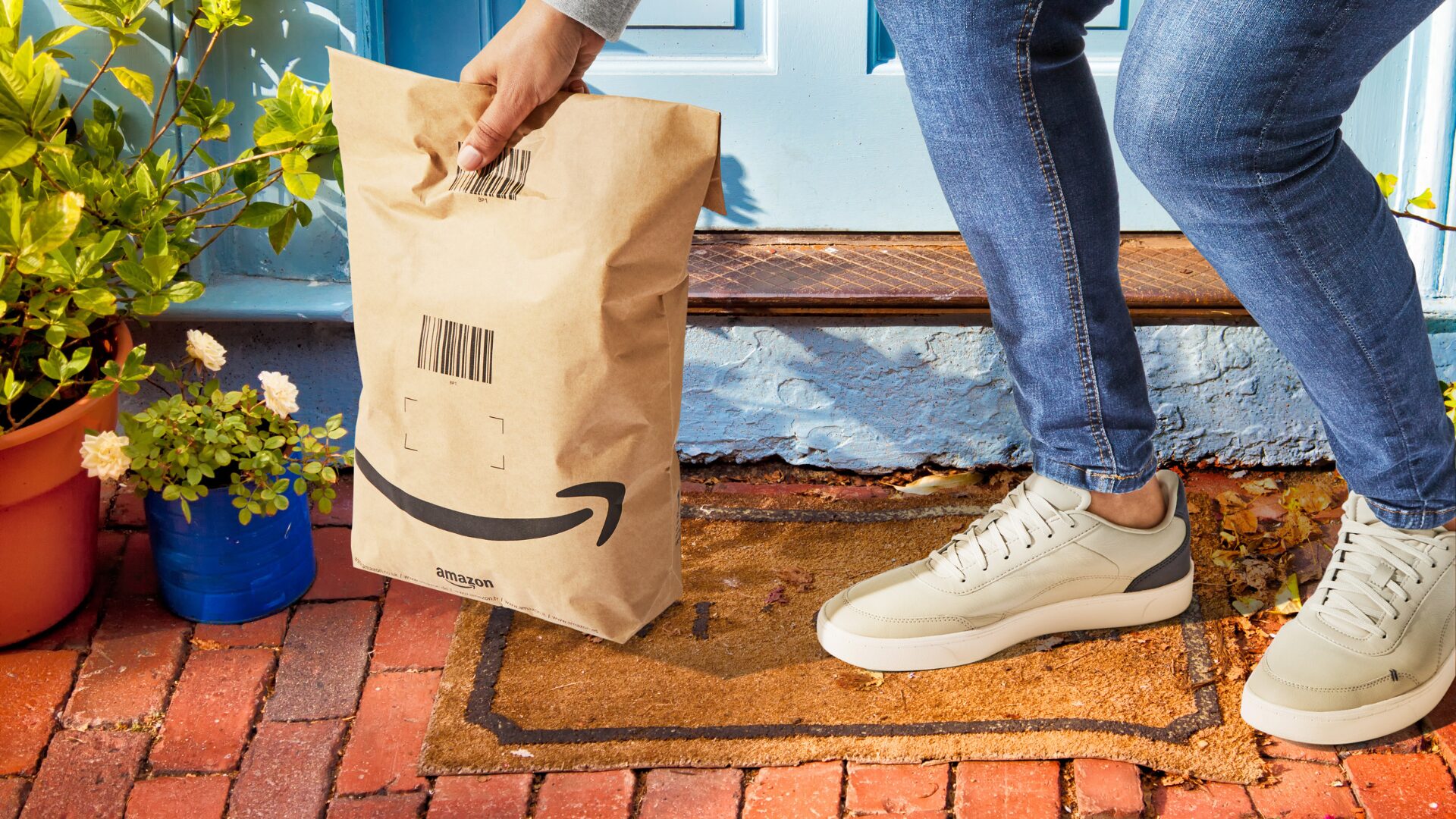As delivery becomes more crucial in business, companies are always innovating to find the ideal way to complete the last mile.
Amazon Prime’s free and fast shipping set the bar for the industry. During the 2019 holiday season, a study by Convey found that twice as many consumers found speed to be a critical factor compared to the year prior. More than eight in 10 shoppers said delivery is important to overall shopping experience, up from 73.6% in 2018, while four in 10 said the delivery experience is considered very important.
With consumers demanding speed and efficiency, some companies are turning to high-tech solutions such as drones or robots, while others are keeping it more low-tech with delivery drivers using revolutionized bikes.
Robots On The Ground
In 2019, Amazon rolled out Scout, a six-wheeled delivery robot, in the Irvine, CA, area. It was first tested in the Pacific Northwest, where it experienced various forms of weather and navigated obstacles found in residential neighborhoods while completing thousands of shipments, according to the company.
More recently, it was revealed the robots will soon hit Virginia’s sidewalks and roadways, reported Washington Business Journal (Feb. 25).The General Assembly made quick work of a bill that would allow Scout to operate in the commonwealth. Under the bill adopted by the House, the robots would be allowed to travel on sidewalks or on the shoulder of a maximum 25 mph road if a sidewalk isn’t available and the bot’s movement doesn’t disrupt traffic.
“Safety is our top priority,” said Brian Moore, a senior manager of public policy for Amazon. “It is really designed to safely operate on sidewalks around pedestrians.”
Soon after Amazon introduced Scout, FedEx introduced its own SameDay Bot—an autonomous delivery device designed to help retailers make same-day and last-mile deliveries.
FedEx is collaborating with companies such as Pizza Hut, Target, Walgreens, and Walmart to help assess retailers’ autonomous delivery needs.
The SameDay Bot features machine-learning algorithms to detect and avoid obstacles, plot a safe path, and allow the bot to follow road and safety rules. Proprietary technology also allows it to navigate unpaved surfaces, curbs, and even steps. FedEx plans to test the bot this summer in select markets, including Memphis, TN, pending final city approvals.
Foodora is also launching a partnership with Toronto-based Tiny Mile, the creators of the Geoffrey delivery robot. The robot can carry up to 6 lbs., or about $80 worth of food, and travel up to over 3.7 miles per hour, allowing delivery in a one-mile radius within 15 minutes. Foodora will pilot three Geoffrey robots for its delivery service in Toronto and plans to add more.
Drones From The Skies
Amazon is also testing Prime Air—a drone delivery service that will transport packages up to 5 lbs. in 30 minutes or less. Currently, Prime Air development centers are located in the U.S., UK, Austria, France, and Israel and the vehicles are being tested in multiple international locations.
Google-parent Alphabet’s Wing is a drone delivery service in partnership with FedEx and Walgreens, reported Business Insider (Feb. 12). It delivers select FedEx packages as well as health and wellness products, like over-the-counter medicines, from Walgreens.
Walmart is actually competing with Amazon in regards to filing more drone patents. With drones having a small range of about 15 miles, Walmart is in a good position to dominate the drone industry with its huge network of U.S. stores. Tech companies, such as Amazon and Alphabet, will need to partner with major retailers if they want to keep up with Walmart in this area.
In January, Ireland-based Manna.aero’s craft, called MNA-1090, took flight and lowered a shoebox-sized package to the ground on a string, reported Bloomberg (Feb. 27). In late March, customers outside of Dublin will be able to try ordering food using the drone.
Manna.aero is preparing to run a couple hundred test flights per day over several weeks to lay the groundwork for a permanent service in small Irish towns. Ben & Jerry’s, U.K. food delivery firm Just Eat Plc, and local Irish restaurant chain Camile Thai are all signed up to participate in the pilot. “In five years, it’s going to be the most normal thing you can imagine,” said Manna CEO Bobby Healy.
The Manna craft is about the size of a computer printer and will carry meals weighing around 4.4 lbs. more than 1.2 miles in under three minutes—even in wind and rain. When it arrives at its destination, the drone will hover and wait for the customer to accept delivery using an app, having indicated when ordering where they want their food to land. The drone will descend and lower the food package.
Eco-Friendly Delivery
A report from World Economic Forum forecasts that demand for last-mile delivery will grow by 78% globally by 2030. At the same time, emissions from last-mile deliveries will rise by over 30%—up to 25 million metric tons per year.
As a eco-friendlier solution, bikes are gaining traction for last-mile delivery, the report noted. Additionally, a study by the University of Washington found bikes to be the most cost-effective for distances of up to two miles with less than 20 packages.
In 2019, DHL Express began distributing packages in Ghent, Belgium, with a new type of cargo bike—the cubicycle. The cubicycle is an electric four-wheeled cargo bike fully equipped with a special container. It can transport up to about 275.5 lbs. of goods. It’s intended for deliveries in the city as the courier departs from a service center on the outskirts of the town.
“DHL has set a number of ambitious environmental targets, including achieving net zero emissions from transport activities by 2050 and performing 70% of last-mile deliveries with green vehicles by 2025,” said Mike Parra, CEO of DHL Express Americas. “Cargo bicycles will play an important role in hitting both of those targets.”
Additionally, New York City is testing a Commercial Cargo Bike Pilot Program with DHL, UPS, and Amazon to take some deliveries out of the hands of drivers in cars and vans and put them on bikes to reduce congestion, reported CNBC.









